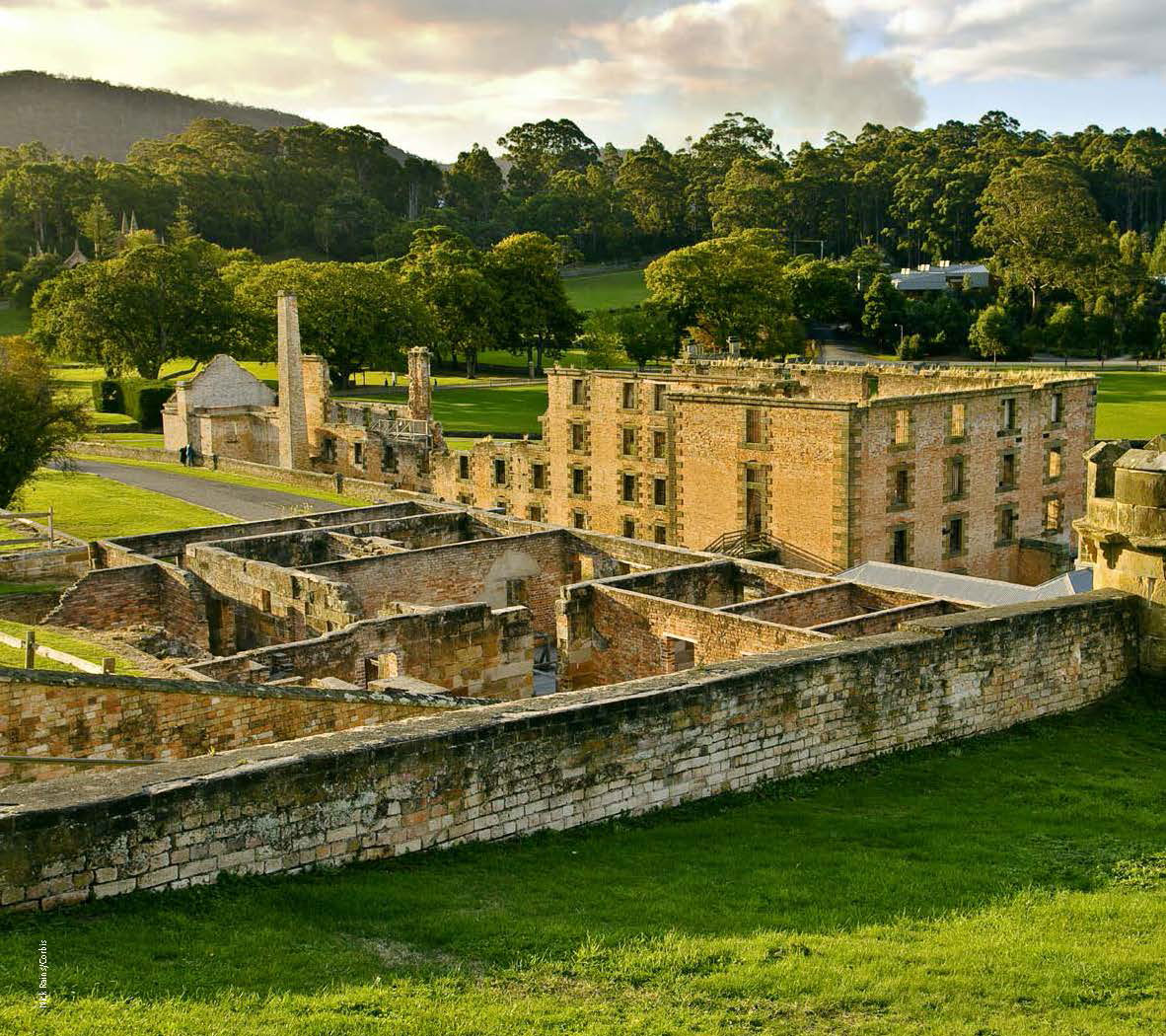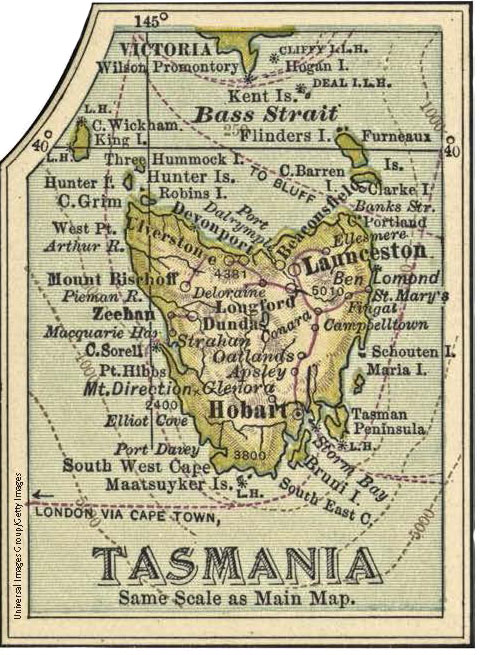
TASMANIA’S Richmond Bridge is a tribute to simple form and a lasting symbol of Australia’s European origins. While surviving convict-built bridges are still relatively common in Australia, the Richmond Bridge is the oldest – and said to be the oldest bridge of any kind still in use in Australia. Today, this tourist attraction is one of Tasmania’s greatest landmarks.
Most Australian states were established as British penal colonies, displacing the Aboriginal owners of the land. Van Diemen’s Land, as Tasmania was known until 1855, began life as a penal colony in 1803. Almost half the 165,000 convicts transported to Australia were sent to Van Diemen’s Land.
The Richmond area on the Coal River in Van Diemen’s Land was then established as the food bowl for Hobart Town (now Hobart), the penal settlement, whaling port and administrative centre 25 kilometres away. It soon became clear that a permanent bridge was needed over the Coal River to facilitate commerce and transport, but such was a major undertaking.
The first stone was laid on December 11, 1823, when the future bridge was designated Bigge’s Bridge, after the Commissioner to the Australian colonies, John Bigge. Appropriately, perhaps, Bigge had reported on the convict system – and it was convicts who built the bridge. Prisoners were the staple labour force in the colony for decades. Construction of the bridge was supervised by Acting Engineer, Major Thomas Bell of the 49th Regiment and Superintendent of Stonemasons, William Wilson. Convicts reputedly bore sandstone from a nearby quarry at Butchers Hill to the bridge site in “go-carts”, each of which required the strength of at least six men. The bridge was probably opened in January 1825.
The bridge’s designer is unknown, the most likely candidates being Bell and the colonial architect David Lambe. According to Australian author Lyn Newitt, Richmond Bridge (the name Bigge’s Bridge was soon forgotten) was the first multiple-arched stone bridge in Van Diemen’s Land and the first founded in the bed of a watercourse. Six semicircular arches or vaults mounted on piers bear the weight of the roadway. The riverbed beneath the piers was paved with large stones to guard against the scouring effects of floods. The sandstone structure is about 41.5 metres long, with a roadway 7.5 metres wide.
The bridge proved extraordinarily durable. The Coal River is subject to intense floods, one reaching as high as the carriageway itself, but none was able to breach the stone structure. As early as September 1826, one newspaper editor predicted the bridge’s demise, reporting that piers had cracked. After a flood in 1844, the bridge was reported to be “part destroyed, leaving just room… for a gig [horse cart] to pass”. In 1859, Director of Public Works, William Falconer, warned of “imminent catastrophic collapse”, due to the riverbed soil being torn up by floods. Today, the only sign of all this drama is a slight undulation in the carriageway, due to uneven settlement of the piers.
Check out the rest of this article in our lastest issue of Asian Geographic No.92 Issue 7/2012 here or download a digital copy here












